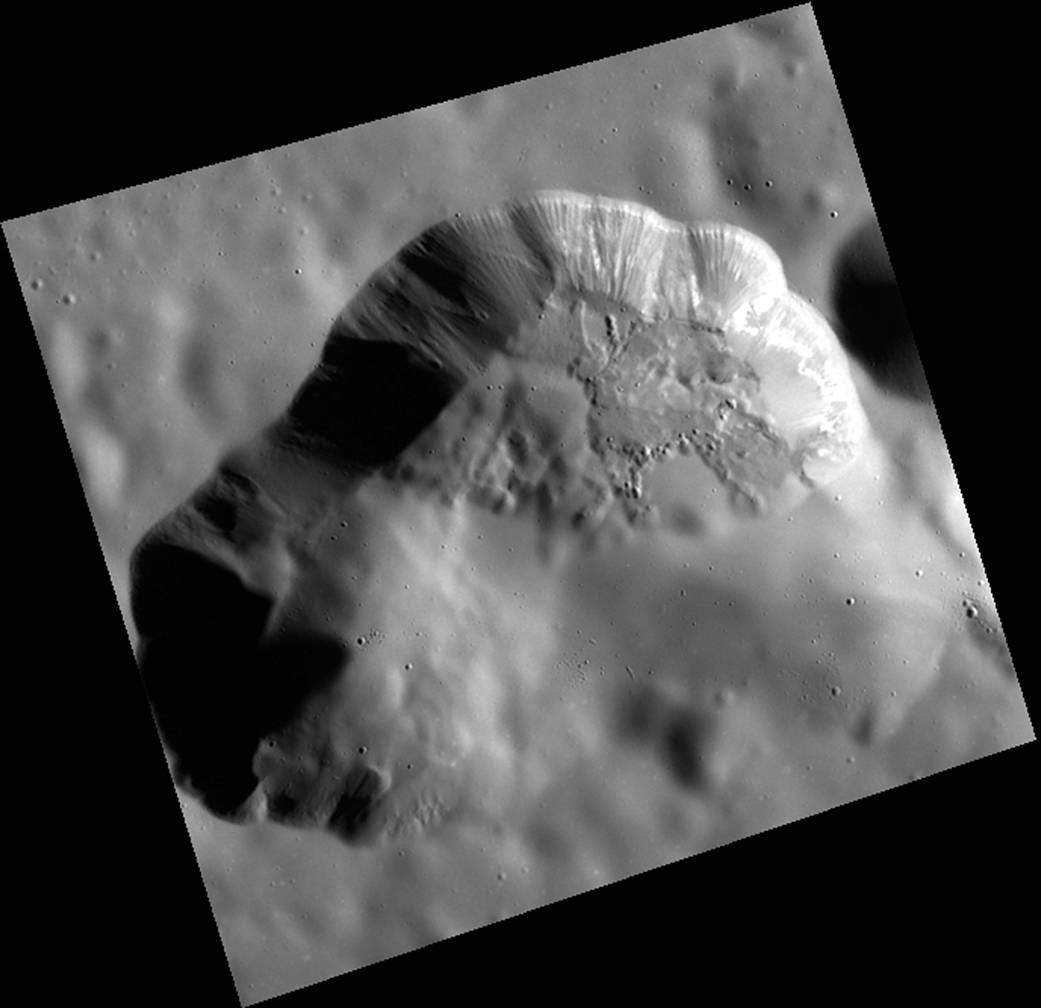Date acquired: January 26, 2015Image Mission Elapsed Time (MET): 64590895Image ID: 7866002Instrument: Wide Angle Camera (WAC) of the Mercury Dual Imaging System (MDIS)WAC filter: 9 (996 nanometers)Center Latitude: 35.84°Center Longitude: 64.00° EResolution: 73 meters/pixelScale: The image is approximately 55 km (34 mi.) across the diagonal.Incidence Angle: 68.5°Emission Angle: 19.1°Phase Angle: 87.7°Of Interest: The volcanic vent northeast of Rachmaninoff basin is framed perfectly in this image. The surface in some regions appears smooth, having been blanketed by very fine particles ejected explosively from the vent. Other regions, like those in the right hand side of the depression, exhibit more texture indicating a younger age. The textured walls indicate downslope movement of material, and a bright horizontal layer just beneath the surface can be traced along much of the northeastern wall. This image was acquired as a high-resolution targeted color observation. Targeted color observations are images of a small area on Mercury’s surface at resolutions higher than the 1-kilometer/pixel 8-color base map. During MESSENGER’s one-year primary mission, hundreds of targeted color observations were obtained. During MESSENGER’s extended mission, high-resolution targeted color observations are more rare, as the 3-color base map covered Mercury’s northern hemisphere with the highest-resolution color images that are possible. The MESSENGER spacecraft is the first ever to orbit the planet Mercury, and the spacecraft’s seven scientific instruments and radio science investigation are unraveling the history and evolution of the Solar System’s innermost planet. In the mission’s more than three years of orbital operations, MESSENGER has acquired over 250,000 images and extensive other data sets. MESSENGER is capable of continuing orbital operations until early 2015.
Credit: NASA/Johns Hopkins University Applied Physics Laboratory/Carnegie Institution of Washington
2 min read



























